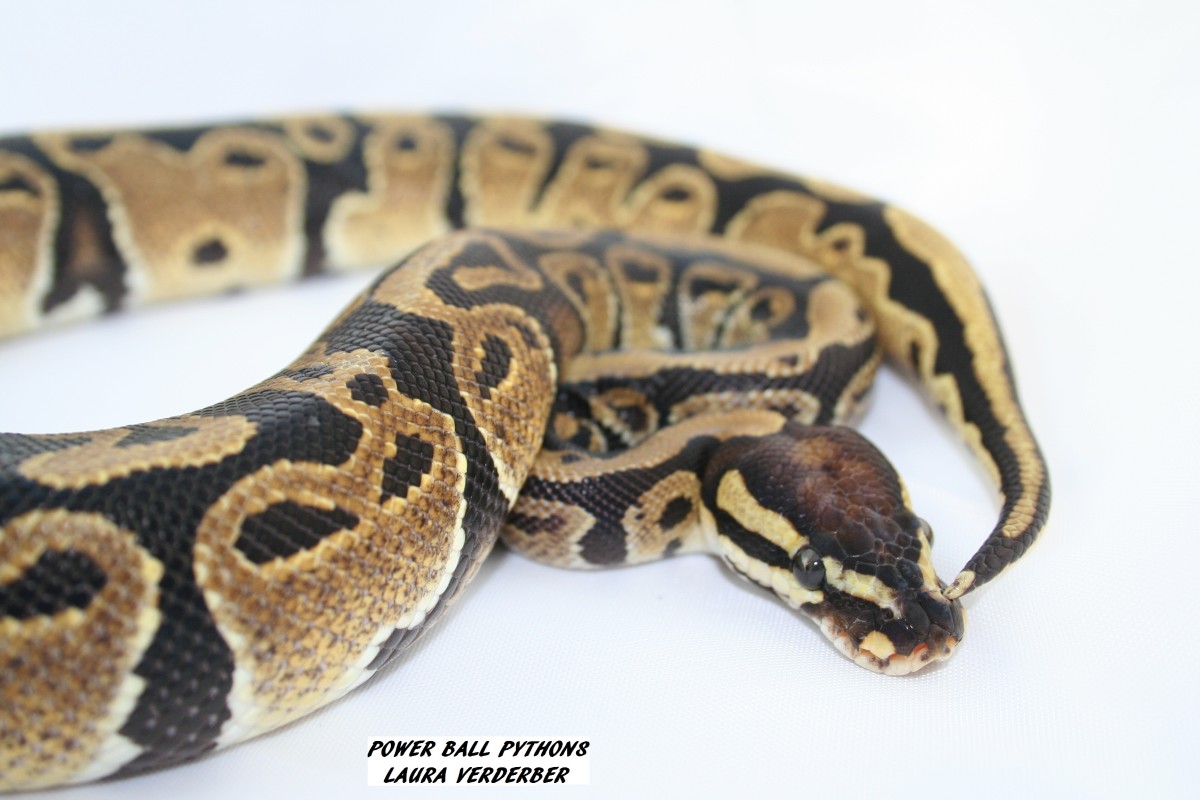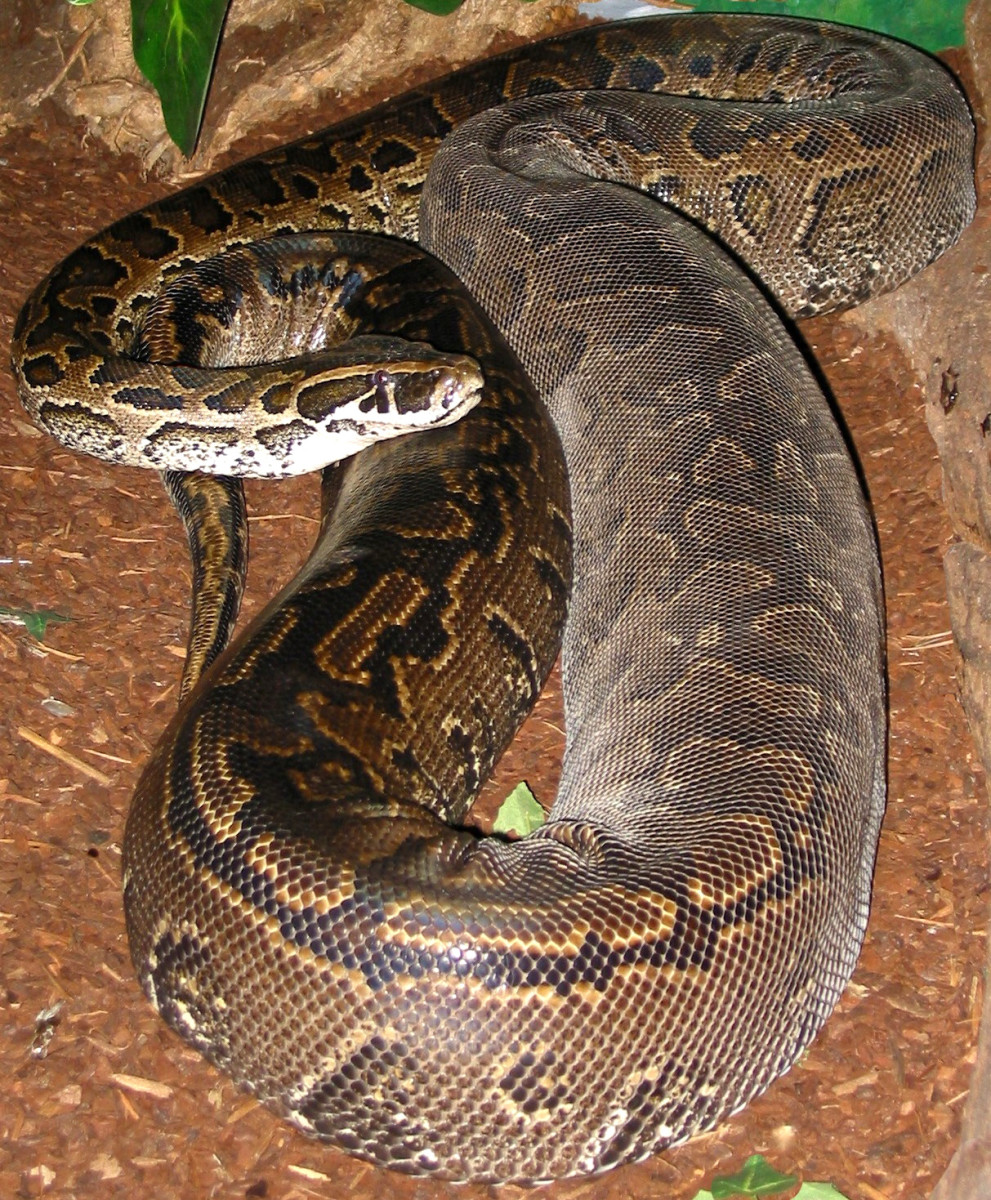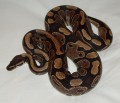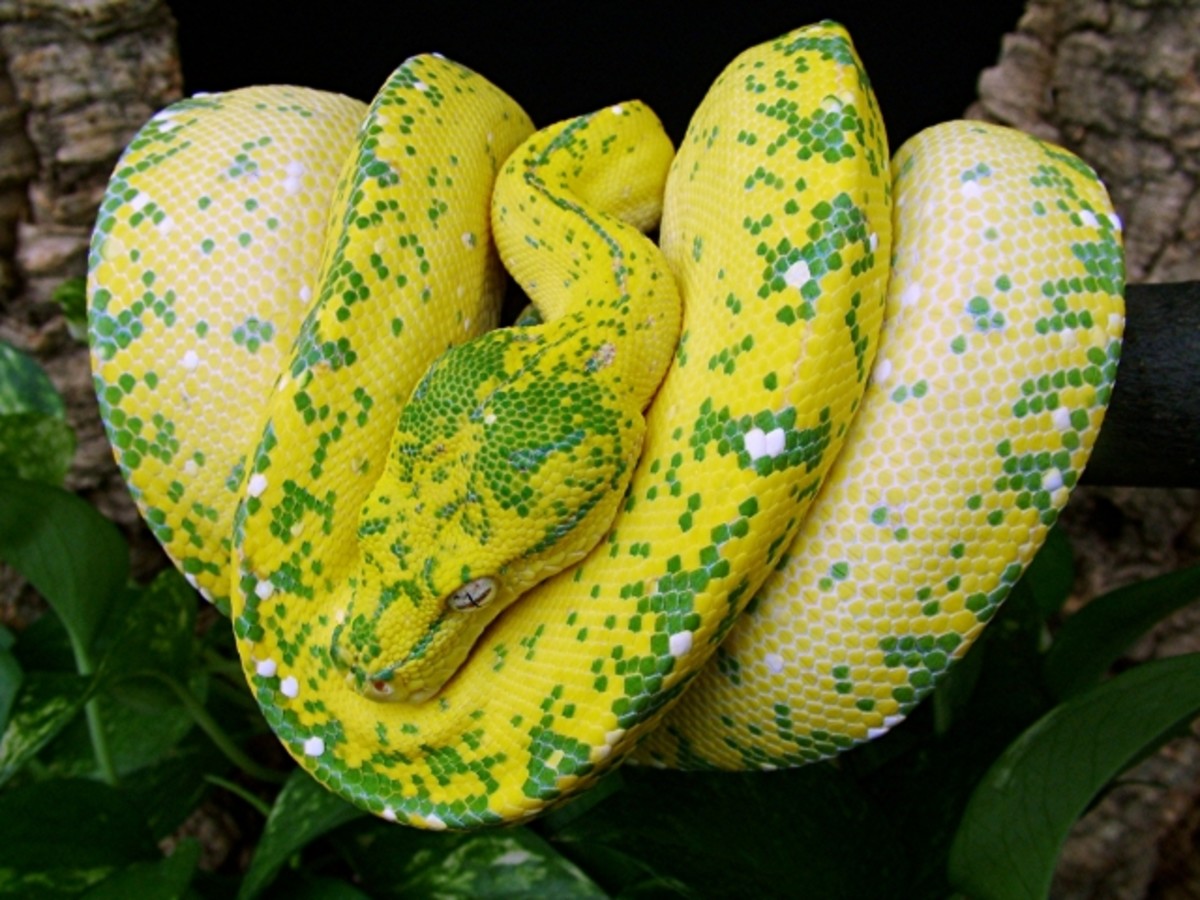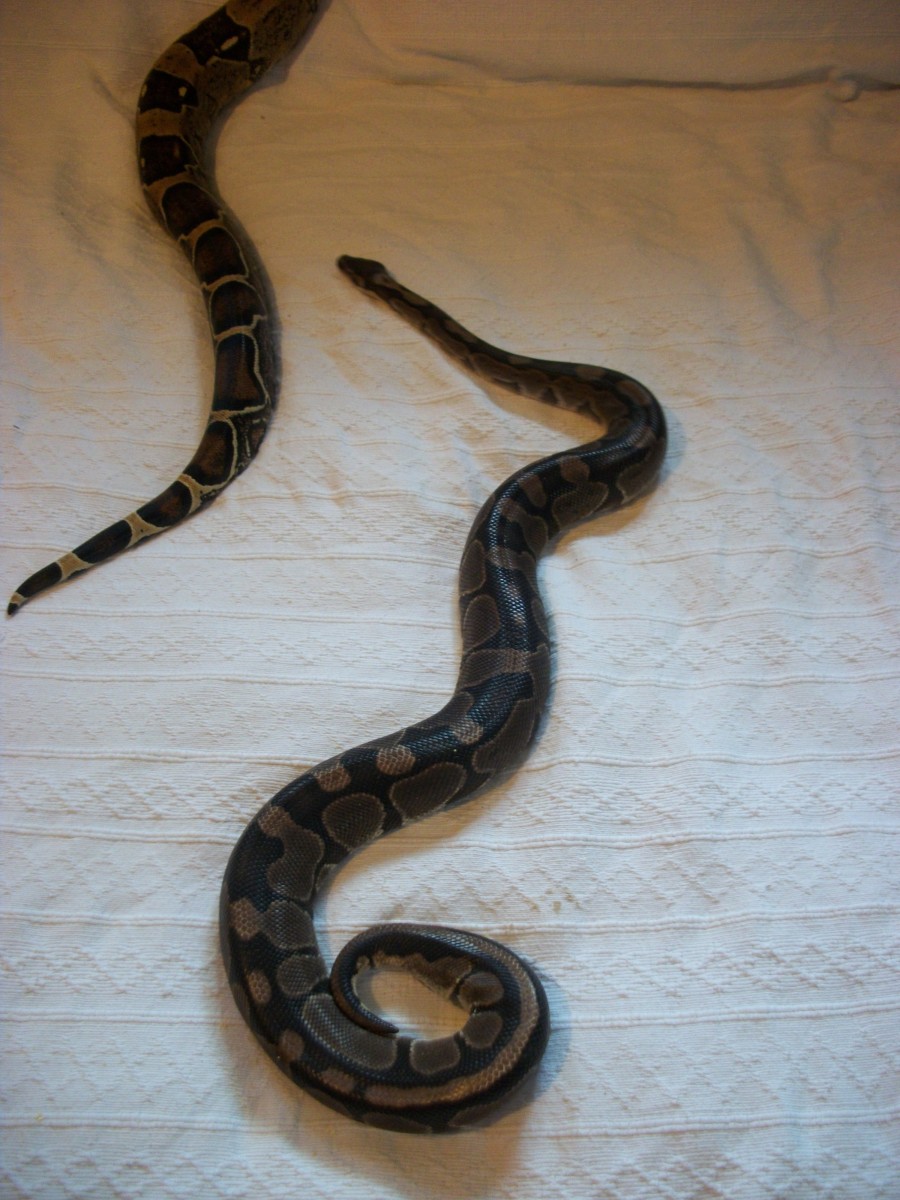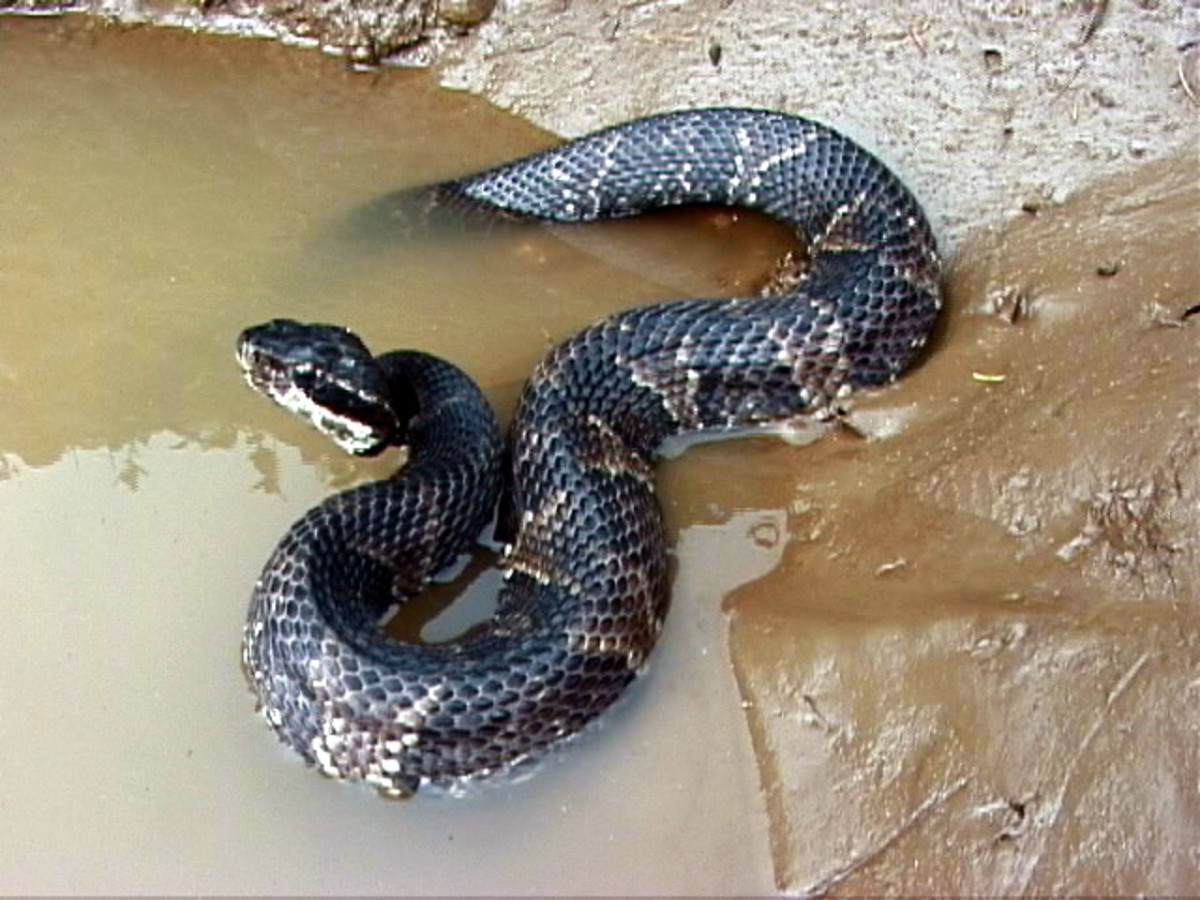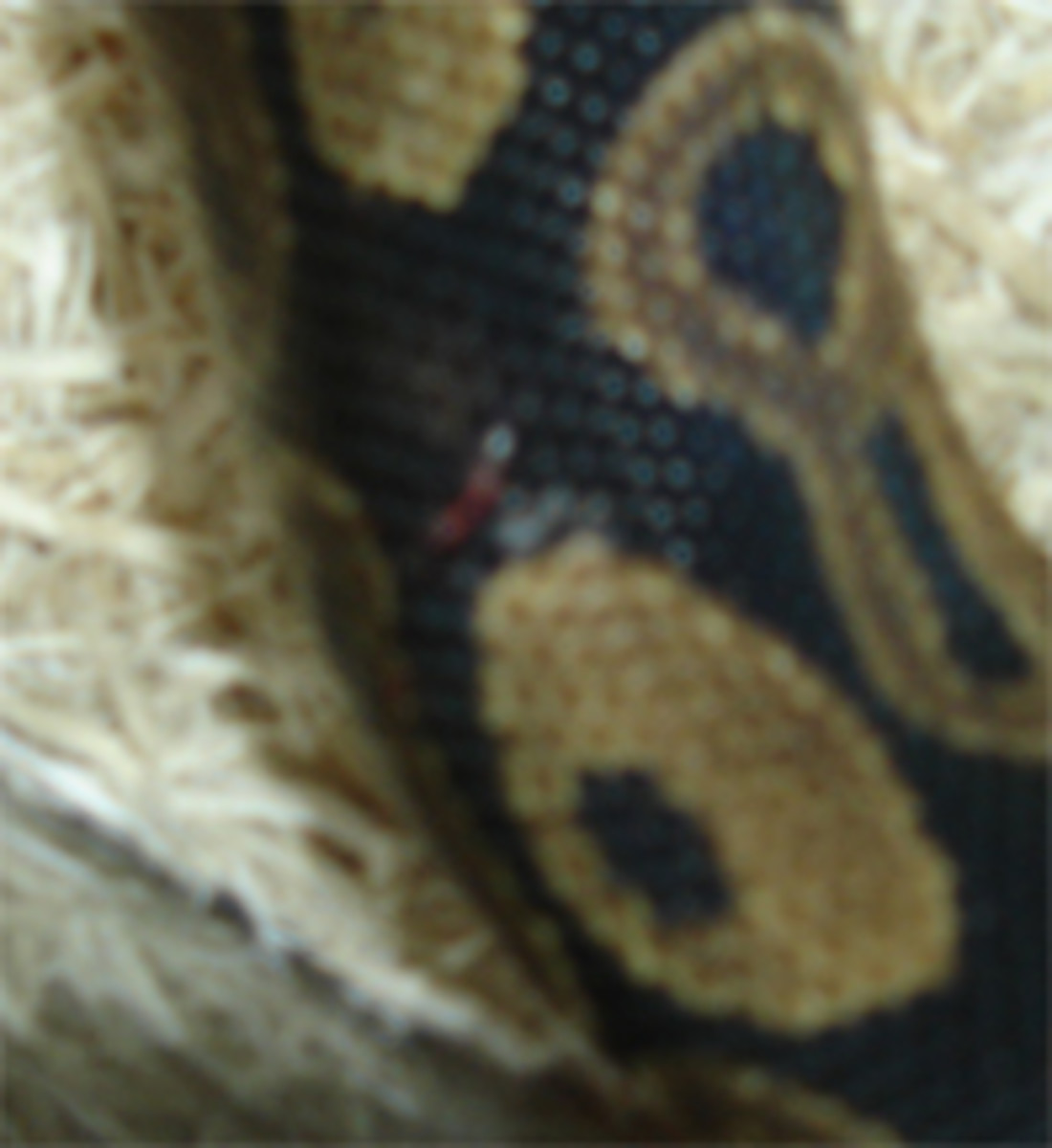Dealing with Ball Python Feeding Problems
One of the most common health problems with ball pythons is their failure to feed on a regular basis or at all. This is commonly seen with imported ball python adults, since they do not readily recognize a domestic rodent as a source of food. When dealing with imported ball pythons, it is best to set them up properly with a hide box, appropriate temperatures, fresh water, a quiet location, and then just leave them alone. Offer them a variety of prey items in the evening. Often, when they are ready to eat, their head will be seen at the entrance of their hide box, as they watch and wait for prey to pass by. Many times, gerbils will entice an imported ball python to eat. African soft-furred rats have also been used with great success in getting imported ball pythons to eat. Once the snake begins to feed regularly, switch it over to domestic rats or mice—they are much easier to obtain.
Husbandry Issues
Long-term captives and captive-bred ball pythons can also stop feeding regularly. If it is not winter—many ball pythons will fast during the winter—and your ball python refuses to feed, there may be a problem. Note that gravid females often stop eating, so rule this out first. Stress is the greatest contributing factor to a ball python not wanting to feed. When dealing with a non-feeding ball python, trying to find solutions to encourage the snake to feed can be difficult and very frustrating.
To discover the reason why the snake is not feeding, it is best to use the process of elimination. First and foremost, double-check your husbandry. Are the temperatures appropriate for the size of the snake? Remember, hatchling ball pythons do not need to be kept as warm as adult ball pythons; they do best with hot spots of 8S°F (29.4°C). Is there a hide box? Hide boxes provide a ball python with security, and most ball pythons need them. Is fresh water available for the snake to drink? There are times when ball pythons will refuse to feed if they have been without fresh water for as little as a few days, especially if you live in a dry environment. Is the ball python being kept in its own enclosure, or is it sharing its space with another ball python? Usually, ball pythons can be kept together in the same cage without any difficulties; however, many times one of the ball pythons will not eat. If this is the case, separate your snakes and set each one up properly.
- Ball Python Cage Temperatures and Heating Tips
Providing your ball python with proper temperatures is essential. Ball pythons need to be kept warm, not hot, in order for them to properly digest their food. Being either too hot or too cold may be a... - Ball Python's Natural Habitat
Many people purchase a reptile for a pet with little or no understanding of that particular animal's native range, habits, or vital statistics. Understanding a small portion of the reptile's natural history...

